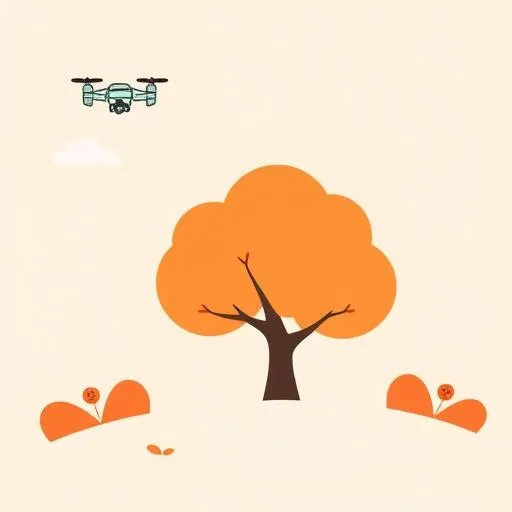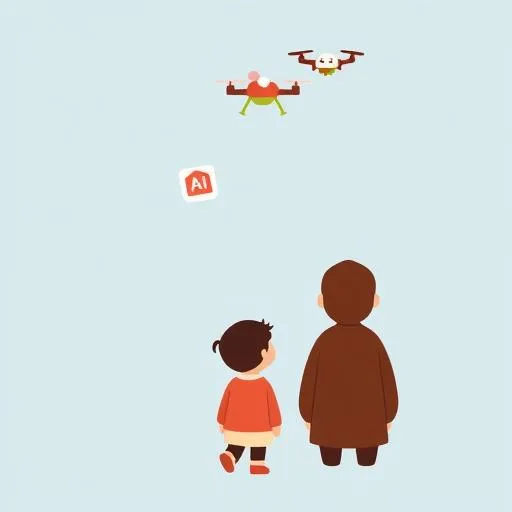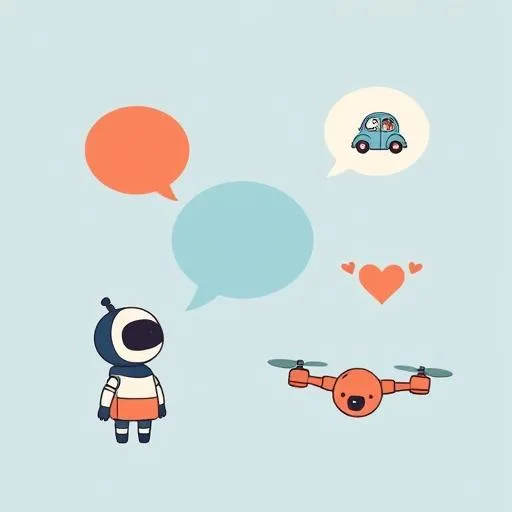
“Cars now steer themselves, robots hold steady hands in operating rooms, drones redraw the map of war.” Melania Trump’s crisp White House warning still rings like a sci-fi movie tagline. She insists it is our duty—parents, teachers, anyone who’s ever packed a lunchbox—to prepare children for the AI decades ahead. A chill and a thrill, right? Because underneath the chrome shine of “the robots are here” hides a tender question: how do we keep childhood human while inviting the machines to pull up a chair?
Why Does the AI Rush Feel So Real for Parents?

Melania’s urgency tracks. One headline dubbed AI the “single largest growth category” of the new administration. Walk outside on a clear late-summer afternoon and you may still smell grass clippings, yet somewhere a delivery drone just dropped allergy meds on a rooftop. Kids notice. A seven-year-old recently asked me if the ice-cream truck would soon be driven by “a nice robot who remembers sprinkles.” Cute? Absolutely. But it signals curiosity already pinging.
The First Lady’s catchphrase—“treat AI as we would our own children”—is parental shorthand: nurture potential, set boundaries, repeat. Researchers at MIT note that children form lifelong attitudes toward tech between ages 5-8; during that window every demo, rule, or conversation becomes a groove in wax. In other words, the minute we hesitate is the minute the devices start writing the syllabus for us.
What’s the Simple Playbook for AI Parenting?

Empowering, with watchful guidance. Sounds lofty, yet it distills into three playground-ready moves:
a) Name the bot. When a smart speaker answers a trivia question, thank it out loud. Kids copy manners—and suddenly the mystery box has a name, a limit, a place.
b) Swap seats. Let Junior teach you a voice command. The power flip is hilarious (yes, Mom will accidentally trigger the fart sound) and the lesson lingers: tech is a tool, not a throne.
c) Sunset the glow. Devices to bed before people. One California study linked evening screen cutoff with 28 % better sleep latency in under-10s. Well-rested kids ask sharper questions the next morning—like why robots don’t yawn.
Melania’s White House Task Force on AI Education backs a national “Presidential AI Challenge,” nudging schools to treat coding like handwriting. The classroom echoes the breakfast table: curiosity first, curriculum second.
How Can You Talk AI Without Sounding Like a TED Talk?

Try these sprinkle-sized chats that fit between shoe-tying and toothpaste:
“What chore would you hand to a robot today?” Instant debate: feed the dog, fold socks, scary Aunt’s poodle?
“If the car drove itself, where would we picnic?” Geography + imagination, no screen required.
“Can a drone be kind?” Watch them wrestle with empathy for machines—surprisingly deep.
Notice how none of these require a laptop. The goal isn’t lecture, it’s lens. When children rehearse ethics at arm’s length, real dilemmas (a classmate deepfaked a photo, a game guilts them for coins) later meet a practiced conscience.
How Do You Balance Spark and Safety in AI Parenting?

Melania once spearheaded the “Be Best” crusade against cyberbullying; she now frames AI as the next sandbox. Parents hear that and picture predators, algorithms, data suction. Fair. Yet over-clenching can stall exploration.
Think of AI like neighborhood traffic: you hold a small hand at the crosswalk, you chat about looking both ways, then you cross. You do not outlaw cars; you scaffold judgment. Similar gears:
– Co-view, co-play. Sit through one round of an AI-generated game. Ask: “What felt fun? What felt fishy?”
– Spotlight data thirst. Explain why voice toys want a name—same reason the lemonade stand tracks who refills.
– Celebrate glitches. When the map mis-labels “library” as “liberry,” laugh together. Robust humility toward tech inoculates kids against over-trust.
What Future-Proof Skills Beat AI?
Critics cheer AI writing code; skeptics warn it may erase jobs. Kids just want to know Will there still be room for my doodles? Yes—if we widen the canvas. Encourage:
Storytelling. Large language models regurgitate plots; humans birth them. Ask your child to finish a comic strip the bot began. Creativity duet!
Hands-on tinkering. Lego towers, paper airplanes, sand moats—spatial reasoning is still VIP in robot repair labs.
Emotional fluency. Name feelings out loud. When a pal botsplains instead of listening, empathy becomes its own superpower.
University of Florida research (2024) found that K-5 students in social-emotional programs scored 12 % higher on subsequent STEM tasks—proof heart and head share circuitry.
Quick AI Parenting Wins for Tonight
1. Dinner guess-game: one AI fact, one AI myth. Who can spot the fake? (“Robots never sleep” vs “Robots can learn to lie”). Instant media-literacy reps.
2. Write a 3-line bedtime poem about a drone that delivers moonlight. Whisper it in the dark—memory hooks love dim calm.
3. Set an “algorithm” for the next playdate: start outside, finish with cocoa. Kids experience that even fun needs logical order—no dataset required.
Hope Before Hype: The Heart of AI Parenting

Melania closed her address with a flourish: AI could become “the greatest engine of progress” the nation has ever known. Big words, but progress is measured at eye-level—where a child realizes the future is something you shape, not something that happens to you.
So yes, the robots are here. But so are we—cheering sections with Band-Aids in our pockets and just enough silliness to teach integrity between giggles. Let’s raise kids who can code a chatbot and comfort a classmate, who can train an algorithm and tame their own tempers. That tandem heart-brain circuitry beats any motherboard, today and every tomorrow.
Source: Melania Trump Says Children Must Be Prepared For Artificial Intelligence: ‘The Robots Are Here’, HuffPost, 2025/09/05
